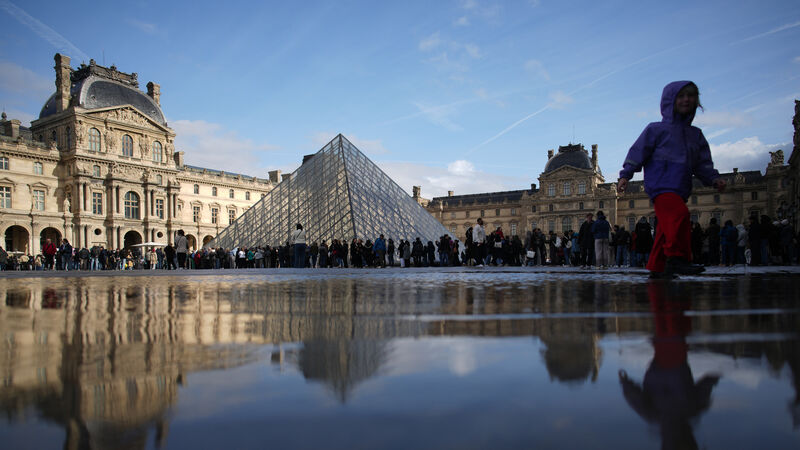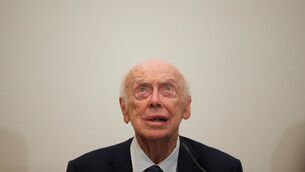Crown damaged in Louvre heist to be restored in ‘renaissance’

The diamond and emerald-studded crown of Empress Eugenie, which was found damaged outside the Louvre after apparently being dropped during the October 19 robbery, will be restored as a symbol of “renaissance”, the museum’s director Laurence des Cars said.
Thieves made away with eight objects on display at the Paris museum, including a sapphire diadem, necklace and single earring from a set linked to 19th-century Queens Marie-Amelie and Hortense.
They forced their way through a window into the Apollo Gallery with the help of a freight lift, using disc cutters to cut through display cases and steal the jewels.
Only Empress Eugenie’s imperial crown, with more than 1,300 diamonds, was recovered on the day of the robbery outside the museum.
Ms des Cars said the crown was likely damaged when it was removed from its display case through a “small cut” made by the disc cutter, rather than when it fell down on the ground.
“All of the most important pieces, the diamonds and emeralds, are actually still there,” she said on Friday in an interview with the France Info news broadcaster.
“A few small pieces of diamonds are missing, but that’s about it,” she said, adding that “one of the eight gold eagles on the crown is missing”.

Ms des cars confirmed the crown will be restored with financing from patrons who already offered their support.
“We’re going to set up a scientific committee to supervise the restoration and it will be a beautiful symbol of the Louvre’s renaissance,” she said.
Ms des Cars offered to resign on the day of the robbery, which was refused by the culture minister.
“I saw a tragic, brutal, violent reality for the Louvre, and as the person in charge, after all the hard work done by the teams that day — it felt right to offer my resignation,” she said.
Ms des Cars said she pushed for modernising the museum soon after she was was named its head in 2021.
Problems she listed include “the obsolescence of our technical facilities, the dilapidation of the building, structural issues related to welcoming visitors and overcrowding in the pyramid, which was designed for four million visitors but now welcomes nine million, and the problem with the display of the Mona Lisa, which is very unsatisfactory”.
Her comments come a day after France’s court of auditors urged the Louvre to speed up its security modernisation plans as a priority.
The report, focusing on the 2018-2024 period and conducted before the robbery, said the museum’s investments prioritised “visible and attractive operations”, such as buying new pieces of art and improving visitor experience, rather than security.
Ms des Cars rejected the criticism, arguing that the Louvre is tasked with all missions together.
The decade-long Louvre New Renaissance plan, which includes security improvements, was launched earlier this year.
It is estimated to cost up to 800 million euro (933 million US dollars) to modernise the museum’s infrastructure, ease crowding and give the famed Mona Lisa a dedicated gallery by 2031.











